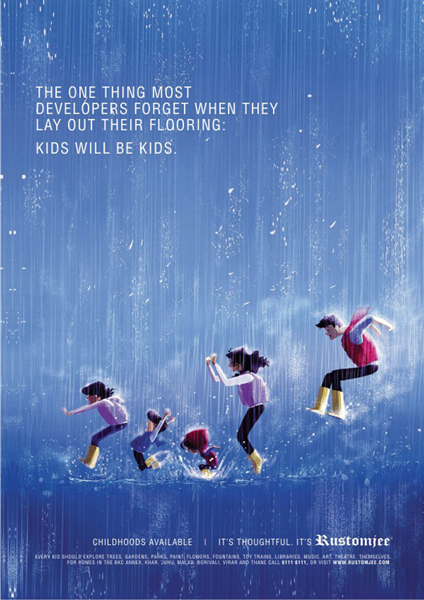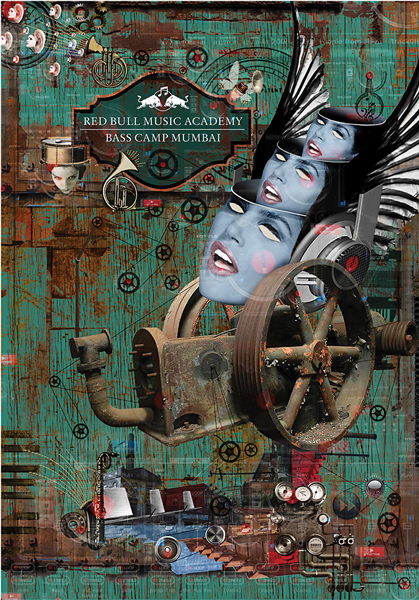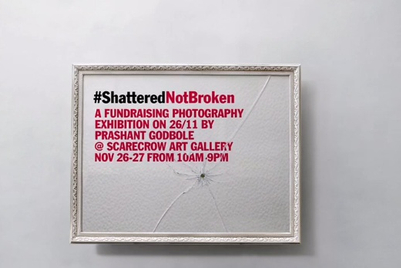
How was Ideas@Work born - after you moved on from Rediffusion...
Zarvan Patel (ZP): We were at Rediffusion for six years, during which we won the Colgate account, and started picking up other business as well. Everything was going fine. But after a point, everything started splitting up and then I realised there is no point in hanging around, so I decided to move.
I had to make a choice - I can be sacked by one human being who can be unreasonable or by twelve clients. I chose the latter. And at that time I met my friend Suresh Manian who had set up Fisheye in Bengaluru. He said, ‘How difficult is it to find 10 clients?’ I thought to myself, ‘How difficult could it be?’ That’s when I decided to set up Ideas@Work.
Prashant Godbole (PG): I was at Rediffusion when Zarvan moved out and the work for Ideas@Work was happening at my house. I had mentioned this to KS Chakravarthy (Chax) and Mahesh Chauhan who were heading Rediffusion at that time, and they were okay with it. Meanwhile, we won the Big Adda account and it was carried in a publication the next day. And so I went up to them and formally announced my exit.
How were the initial days?
ZP: For the first three years, we were there every night, churning out work, and pitching non-stop. The only reason anyone would come to an agency like ours is for the quality of work. We do go out of our way to ensure the quality is of a higher standard. Reid & Taylor was the first client we had. And then Big Adda happened.
Where did you start working together?
ZP: Kersy Katrak introduced me to Mohammed Khan at Enterprise. I did a copy test and was soon on board. I was at Enterprise for nearly six years during my first stint. I then moved to Contract Advertising. Thirteen months later I got a call from
Enterprise and I happily moved back as I love Enterprise. It’s during my second stint that I met Prashant. There were no teams as such at Enterprise but Kersy asked me to work with him and we ended up doing a lot of work together. And by then a lot of people started moving from Enterprise, so, by default we were working together.
PG: Being a graduate from JJ School, I went straight into advertising. I stood first at JJ and I got six offers. I took up the one which paid the best and so I joined Clarion, then moved to Ogilvy and so on. While at Contract, Rahul da Cunha (my copy partner and good friend) moved to join his dad’s agency. He asked me to join him but I didn’t want to be an employee of a good friend. That’s when Enterprise happened.
How was it working with ad veteran Mohammed Khan at Enterprise?
PG: Even though I had learnt designing, I actually had no clue. After finishing five years of college and working in six agencies, I still didn’t know anything about advertising. When I joined Mohammed, he taught me all about designing. He took everything out of me and recreated the designing concepts for me. I kind of understood basics but actually executing – I learnt from Mohammed.
ZP: Mohammed is a classic advertising guy. I don’t think they train such all round guys any more. It’s just pigeon-holing nowadays.
You have to be a planner to write great copy - that is the old school of advertising. The copywriter used to make fun of the planners/suits or vice versa; it was a healthy war that used to take place where everybody in the agency is thinking along the same stream. Anand Halve being a suit used to write great lines. I used to get Mohammed to write all my lines.
On the move from Enterprise to Rediffusion...
ZP: In 2000, I wanted to buy a flat and needed the funds. So I approached Arun Kale and he helped me move to Rediffusion where I got a huge hike. Mohammed did have problems with our move but I needed the jump monetarily. Hence, both of us moved to Rediffusion as creative directors. At that time, I thought that if you are a creative director then there is no higher designation; I didn’t know of the designations like national creative directors or executive creative directors. So when we joined, the people at Rediffusion thought our designations were inappropriate and soon we were made executive creative directors and finally when our cards came in we were elevated to senior vice presidents and ECDs.
Tell us about the stint at Rediffusion.
PG: We had an interesting way of functioning as we didn’t believe in hierarchy. We would all sit together - be it a client servicing person or a junior or a peon, we would be together and share our ideas. We never said, ‘I am a copywriter and I will write lines, you are an art director and you don’t think of ideas’. So if a servicing guy came up with an idea we would happily take it. That was the culture we imbibed and this helped us produce better stuff. A hundred brains are better than one. There was Gullu (Sen) and then Chax was our boss. The NCDs kept changing but we continued to do our work.
How was it working on the Colgate account?
PG: The ‘Talk to me’ campaign created by us was taken by Colgate to seven other countries. Having Vikram Kaushik at the helm at Colgate made things easier for us. What happens with a global client is that they have a global mandate with the campaign running across countries. If there is some advertising being conducted, it has to go across the board. So it’s very difficult to crack a global campaign but we managed it. It’s difficult because if you want to get your concept approved then you have to go through 100 levels of reporting. So internally, our chain would be Mumbai - Singapore then Singapore - New York. Simultaneously, the client would also follow the chain. But thanks to Kaushik, Singapore was taken out of the system and we started interacting directly with New York. This was because the client understood good advertising and what it could do for them. This campaign took exactly one year in getting approvals.
What have been the learnings you picked up in your ad journey?
ZP: The principles we follow at Ideas@Work are the ones we learnt from Mohammed and Kersy. That is, you spend time with people and you absorb their thinking, rationale, approach and understanding. Their thinking was exactly what the world was following. We got to Lowe London and did a course with a brilliant guy - Adrian Holmes. That agency in those days was turning out brilliant stuff and I saw all the principles and practices that Kersy and Mohammed spoke about actually displayed on global brands. We consider Bernbach the father of our business (our kind of advertising).
And how has the journey at Ideas@Work been so far?
ZP: Every one of our clients has helped push the business forward. M Raghunnath (founder of Equity) said “Never let anything go” and that’s something we have followed to the ‘T.’ We cannot afford to let anything go. Even if it’s a leaflet, we do it.
All our business has grown through word-of-mouth. We haven't put a key number yet. Whoever has worked with us has been promoting us.
PG: So whatever we have done so far has been talked about and picked up awards (real awards, not scams). The advertising has helped clients achieve the targets they had set out for themselves. For example, the Big Rock campaign helped the client grow their business by 3000 per cent; even Groupon saw a huge spike in their sales and registrations and so on.
Any campaign that you hold close to your heart
PG: Rustomjee - ‘What is the carpet area of childhood’ is a memorable campaign as we changed the entire category. In a regular builder’s ad, you will always see the building. But for this campaign we never showed the building in the ad. It’s a huge risk to not show the product.
You have been a part of the network agencies and now you head an indie… how difficult is it being an independent agency?
ZP: It's much easier being part of an independent agency. The work gets done at a much faster pace. When you go to a big system you have ten guys doing one guy’s job so you have sheer wastage. This is my experience from Rediffusion - 80 per cent of the work is done by 20 per cent of the work force. Further, the pressure of having to do something for someone else is not there (in an independent). Normally, you compromise your decision making because other people are depending on it. Here I know exactly how much I have got, and I don't have to cave in. So we have said no to clients as and when we wanted. This is the biggest advantage that we have had.
What ails Indian advertising?
ZP: Is mentoring available at big agencies today? I doubt. Why it pays off to work with Mohammed or Kersy is because they were really smart and just being around them you could pick up a lot. Today, advertising is more process-driven: the servicing guy goes up to the client picks up the brief, brings it to the planner. They sit down and discuss, the creative guy may or may not be invited.
We ensure that it's different at Ideas@Work. Ten guys sit down together in one hour and there is brain storming happening - when there is only one guy responsible for that product.
Rustomjee: The 'Childhoods available' campaign has broken entirely new ground in the category.
Groupon: A fun campaign we had fun doing, and the judges like everyone must have had fun, so they gave it some metal and a whole pile of hits.

Times of India: Must be something in the thought; they're still using it.
Bigrock: The fun we've had working on BigRock has worked for the brand.

Killer: How do you take Indian Cowboy brand and make it acceptable to smart Indian kids? Simple drop the fake cow boy and gear up the imagery to go 100% international in one year.
Colgate: The 'Talk to Me' campaign which demonstrated the virtues of Fresh Breath when used on teenagers, cops, government officials, pick-up-lines, (even altercating PMs), was possibly India's first fully paid for advertising export.
Redbull: How many agencies get the oppurtunity to introduce the country to some of the world's craziest people on bike, bicycles, legs, didgeridoos, paint, parachutes, planes, paper planes, you bet Redbull was fun!



Airtel: The campaign gave Airtel it's first taste of perceptual leadership, also Sunil Mittal the Global Marketing Awards in London (Advertising Telecom) and us the AAAI and D&AD Telecom showcase.






.jpg&h=334&w=500&q=100&v=20250320&c=1)
.jpg&h=334&w=500&q=100&v=20250320&c=1)

.jpg&h=334&w=500&q=100&v=20250320&c=1)


.jpg&h=334&w=500&q=100&v=20250320&c=1)


.jpg&h=334&w=500&q=100&v=20250320&c=1)





.jpg&h=268&w=401&q=100&v=20250320&c=1)


